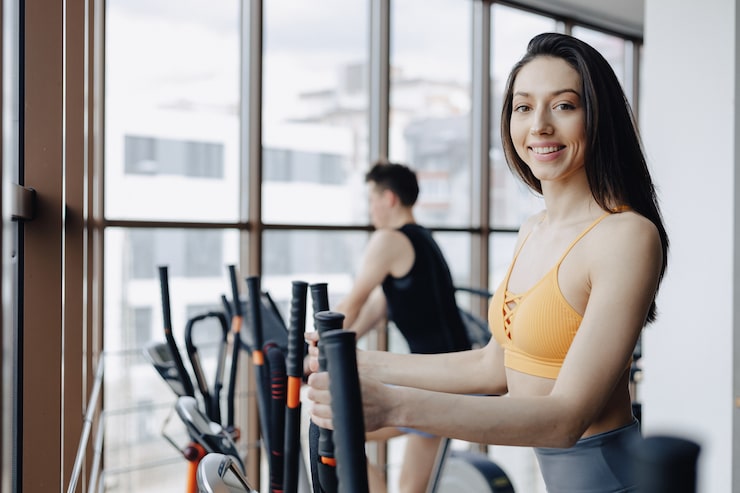A home treadmill is a practical, cost-effective alternative to outdoor walking. It gives you gym-like cardio options you can use at home or in the office to help meet your fitness goals.
But is walking on a treadmill good for you? Are there any downsides?
Below are the key facts about treadmills, their benefits and possible drawbacks, plus answers to common questions.

How can a treadmill improve your health?
Health experts often recommend walking regularly for longevity and overall wellness. Treadmill walking offers several clear benefits:
1. Easy to use
A treadmill copies the most natural activity—walking—so it’s simple to learn. Because it’s easy, you can multitask while improving stamina, muscle tone, and strength. That simplicity helps keep you consistent with exercise.
2. Better control of the environment
A treadmill gives you stable, predictable conditions. You aren’t limited by weather or rough terrain, and you can set speed and incline, track distance, calories, and heart rate, and get feedback on progress. Note that not every treadmill has an incline feature, so look for one with that option if it matters to you.
3. Improved weight loss
Walking, jogging, and running are effective calorie-burning activities. Regular treadmill sessions support steady weight loss by burning fat and building muscle. Increasing speed or incline can speed up results.
4. Heart health
Treadmill walking is a low-impact aerobic exercise that improves breathing and circulation, strengthens the heart, and supports overall cardiovascular health.
5. Joint comfort and safety
Many home treadmills have shock-absorbing decks that reduce impact on knees and joints. That cushioning makes treadmill walking a safer choice for people with joint conditions like arthritis or ligament injuries. Treadmills are often used in rehab programs because they support safe recovery.
Possible downsides and common mistakes
Treadmills are generally safe because they don’t require awkward positions, heavy lifting, or risky attachments. Most problems come from improper use. Avoid these common mistakes:
– Stepping onto a moving belt: This is very dangerous and can cause serious injury. Always start at a low speed and hold the handrails if needed. Use the safety stop if you stumble.
– Gripping the handrails too much: Handrails help with balance, but leaning on them changes your posture and can cause back pain or dizziness over time. Try to let go once you’re stable.
– Looking down and leaning forward: The moving belt can make you want to look down and lean, but this can lead to neck and back stiffness or dizziness. If you can’t keep the pace, slow down and rebuild stability.
– Taking very long strides: Overreaching can strain your heels and increase pressure on your knees.
If you follow the instructions and basic safety rules, serious side effects are unlikely.
FAQs
Is walking on a treadmill as good as walking outside?
Yes—often it’s better. A treadmill lets you control speed, incline, distance, and intensity, and track heart rate and calories. It removes outdoor challenges like bad weather or uneven ground and provides ideal conditions for low-impact walking.
Is walking on a treadmill good for sciatica?
Yes. Moderate, low-speed treadmill walking can reduce inflammation and ease pain through movement and endorphin release. The cushioning also lowers the risk of injury.
Is walking on a treadmill good for lower back pain?
Yes. Low-impact walking strengthens back muscles without putting excessive pressure on the lower back. Controlled speed, incline, and the option to use handrails can help reduce strain.
Will walking on a treadmill tone my legs?
Yes. Faster walking tones thighs and glutes. Start at a comfortable pace, then increase speed to 3–5 mph and add a 4% or higher incline to engage more leg muscles.
Is walking on a treadmill okay during pregnancy?
Yes. Treadmill cushioning helps with swollen joints, and preset programs let pregnant users choose safe, moderate workouts while tracking key metrics.
Conclusion
Whether you want to start exercising, lose weight, or tone muscles, treadmill walking is a great option. It’s especially helpful for people with joint issues because it reduces impact while giving you control over your workouts. Used correctly and safely, a treadmill is one of the most versatile and accessible home exercise machines for all ages and fitness levels.
Author Bio
Sofia Alves is a fitness enthusiast who enjoys running and encouraging others to build healthy habits. She continually studies and invests in education to expand her knowledge, and believes any workout is better than none.
Petra Nakashian has written about nutrition, natural health, and ingredient research for over 10 years. After losing both parents to cancer at a young age, she became deeply committed to understanding how diet and lifestyle affect long-term health. Petra focuses on evidence-based wellness content, using scientific studies and expert sources to help readers make informed choices. She’s known for explaining hidden ingredients in everyday foods and drinks clearly and without fluff.